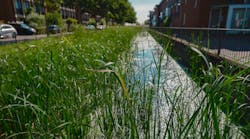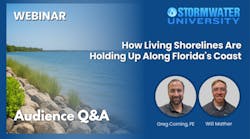IECA News
Make the MOST of Your IECA Membership: Part 1
Do you wish you could just pick up the phone or go online to ask an expert in your field about a problem?
As an IECA member you have access to over 2,000 industry professionals. Search people by field of practice, company, location, products, certifications, and more. You can also join our LinkedIn group with over 1,200 professionals.
Do You Need PDHs or CEUs?
As a Professional Plus member (or higher), you can earn up to 21 credits this year. That’s right. Two IECA webinars, four Environmental Connection magazine quizzes, and 15 vendor webinars located in our eLearning library.
How About Getting Involved and Networking?
If this is a desired benefit, we’ve got you covered. IECA’s chapters work on the regional level and host chapter conferences, MS4 conferences, IECA roadshows, local meetups, lunch and learns, and so much more!
How Do You Join?
For more information about IECA benefits or to be part of the member organization that provides education, resource information, and business opportunities for professionals in the erosion and sediment control industry, please visit www.ieca.org/benefits.
What our members are saying about IECA…
“IECA is, first and foremost, an educational organization. However, there are many other benefits to belonging to IECA, and more importantly in attending the chapter and international conference.”
–Jason Dorney, CPESC, Oceanside, California
“Being IECA members, we know more about erosion control technology and the availability of materials to control soil erosion. It is also possible to develop new business contacts and opportunities. Networking with other professionals in the industry is the biggest advantage of IECA membership.”
–C. R. Devaraj, Shertallay, Kerala, India
“IECA membership provides instant credibility for our company within the world of erosion control and demonstrates our commitment to this marketplace and industry.”
–Bob Moran, Atlanta, Georgia
Bring World-Class Training to Your Door
IECA on Location is a
What Are the Benefits?
- We bring training to your location
- We manage the instructor and all of the travel arrangements
- Our instructors modify the content to address your regional issues
- You select the time and date of the training
- You save money and travel expense
Course Topics
- Erosion and sediment control
- Stormwater management
- Surface water restoration
- MS4 management
- Other certifications
About IECA Faculty
IECA faculty members are highly trained educators, who are experts in specific fields of erosion, sediment control, and stormwater management. They have years of classroom experience and have served IECA for many years as our premier educators.
Cost
The fee for most IECA on Location courses is $2,000 for full-day courses and $1,500 for half-day courses. There are also travel expenses for the instructor, which include airfare, ground transportation, parking, and meals. As a client or sponsoring organization, you would be responsible for the fee and travel expenses.
Getting Started
Complete our online form and let us know how IECA can meet your desired educational outcome. If you can’t find a course that specifically addresses your needs, don’t worry—IECA will work with our faculty to customize a program. For more information and to fill out the registration form, visit www.ieca.org/onlocation.
Sustainable Technologies Evaluation Program: Fostering Sustainability Through Innovation
Many environmental technologies are introduced into the marketplace every year, and many of them offer innovative solutions for improving the environment and our standard of living. However, adoption of the technologies is often slow because of a lack of information on performance and cost effectiveness, as well as the perceived risk associated with implementing new products or practices.
The multi-agency Sustainable Technologies Evaluation Program (STEP), led by the Toronto and Region Conservation Authority (TRCA), was introduced in 2004 to help address these issues and accelerate the process of adoption. The program’s major objectives are to monitor and evaluate clean water, air, and energy technologies with respect to the environment and human health; to work with municipal partners and other groups to assess barriers and opportunities for implementation; to develop tools, guidelines, and policies; and to promote broader uptake and use through research, education, and advocacy.
STEP projects reflect various priorities as identified by municipalities and other levels of government. Technologies monitored under the program have the potential for widespread application in urban environments, and contribute to reducing the environmental impacts of human activities and improving the quality of life for residents.
The STEP program has a strong knowledge transfer component delivered through various media. Project reports, fact sheets, decision support tools, and updates are provided on a publicly available website (www.sustainabletechnologies.ca) and staff regularly present throughout Canada and the US at various industry events and conferences throughout the year.
A wide range of professional training courses, seminars, and workshops also complements the STEP program. STEP partners with industry experts and other educators to deliver quality education and training targeted to industry professionals including engineers, consultants, municipal staff, agency staff, landscape architects, contractors, facility operators, architects, and other industry professionals. Courses are available via e-learning, webinars, field training, and in-class sessions as well as via an annual two-day TRIECA conference (www.trieca.com), co-hosted with the Great Lakes Chapter of IECA, which focuses on innovative stormwater management, construction site erosion and sediment control, and natural channel design. Many of the in-class and field training sessions are held at the Living City Campus, TRCA’s center of excellence for urban sustainability. The Living City Campus is set apart from many sustainability centers by its natural setting and its real-world demonstrations including the Archetype Sustainable House, the Living City Farm, the photovoltaic and wind test sites, the off-grid cottage, and the green parking lot, among others. Through its educational offerings the STEP program aims to transform not only individual perspectives, but also the collective capacity to build a healthy and lasting city region.
To learn more about STEP and to find out about upcoming educational events, please visit www.sustainabletechnologies.ca.
10 Minutes With Mid-Atlantic Chapter President, Dylan Drudul
Dylan has been in the sediment control and stormwater industry for five years, and member of the IECA for four years. He is a graduate of Slippery Rock University and holds a bachelor’s degree in environmental geoscience. He currently works for the City of Rockville in Maryland as the senior sediment and erosion control inspector. Dylan is the current Mid-Atlantic IECA Chapter President and has served on the board of directors since 2015. Previously, Dylan managed an erosion control product distribution/water-quality consulting company in the Baltimore area. He also has work experience in the natural gas drilling industry, structural geology, hydrology, mapping of rock strata, acid mine drainage/mitigation, abandoned mine reclamation, and environmental compliance/consulting.
Q: Why are you an IECA member?
A: The IECA is the only organization out there where I can find others with the same passion for this industry as myself. The sense of comradery I feel at regional and national conferences is more than I could ever expect to find anywhere else. I have built my network of peers by being a part of the IECA and I would not be where I am today without the organization.
Photographer: Aloisio Pereira
Submitted by: Luiz Lucena
Location: Pernambuco, Brazil
Date taken: June 2015
Second Place Severe erosion on railroad slopes caused by failure of drainage system
Photographer: Adenilson Cruz
Submitted by: Luiz Lucena
Location: Carajas, Pará, Brazil
Date taken: February 2015
Third Place Failed BMP causes significant erosion and offsite sediment
Photographer: Laercio Costa
Submitted by: Luiz Lucena
Location: Itabirito, Minas Gerais, Brazil
Date taken: 2014
Second Place Mini montage of a bioengineered solution for an erosion control project completed by Toronto and Region Conservation Authority along the Humber River in the City of Vaughan
Photographer: Moranne McDonnell
Location: Canada
Date taken: December 2014 to September 2015
Third Place A lined wastewater lagoon project made entirely out of very erodible sand. Six years later, after using a BSA, the soil layer revealed a strong organic layer that is supporting strong growth of vegetation.
Photographer: Mark Myrowich
Submitted by: Natalie Pienkowski
Location: Milner Ridge Manitoba
TECHNOLOGY IN ACTION
JUDGING CRITERIA
Identification of technology—is it obvious what technology is being used?
Degree of action—does the photo show a process or merely a completed installation?
First Place Historical site degraded by mining activities being recovered and stabilized using several bioengineering practices
Photographer: Paula Pereira
Submitted by: Luiz Lucena
Location: Minas Gerais, Brazil
Date taken: March 2014
Second Place Protection of a rocky vertical slope using topsoil, wattles, and coconut fiber erosion control blankets.
Photographer: Aloisio Pereira
Submitted by: Luiz Lucena
Location: Itabirito, Minas Gerais, Brazil
Date taken: January 2015
Third Place Hillside application of a biotic soil amendment
Photographer: Mark Myrovich
Submitted by: Lauren Alaniz
Location: New Brunswick, Canada
Date taken: 2012

















